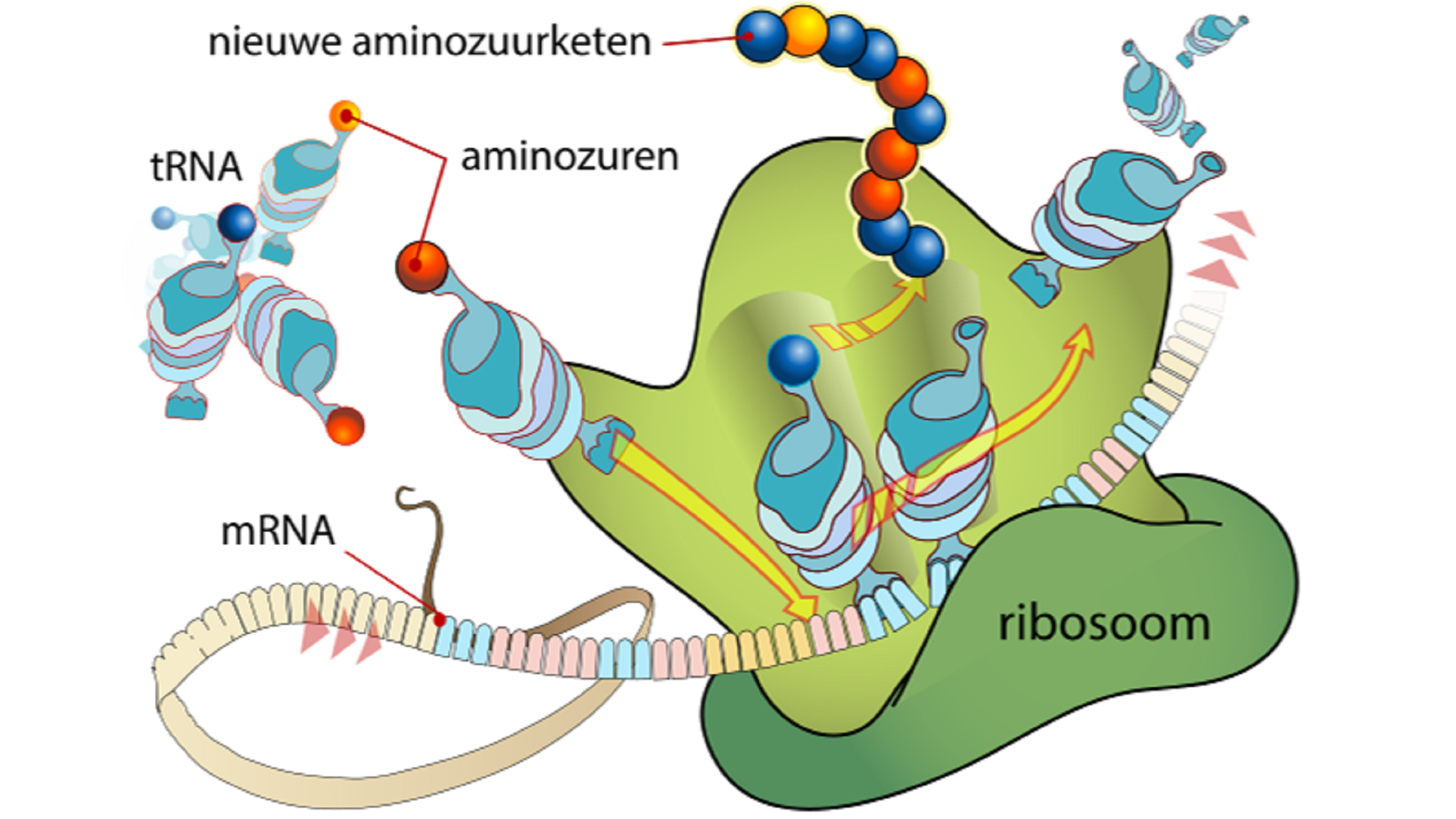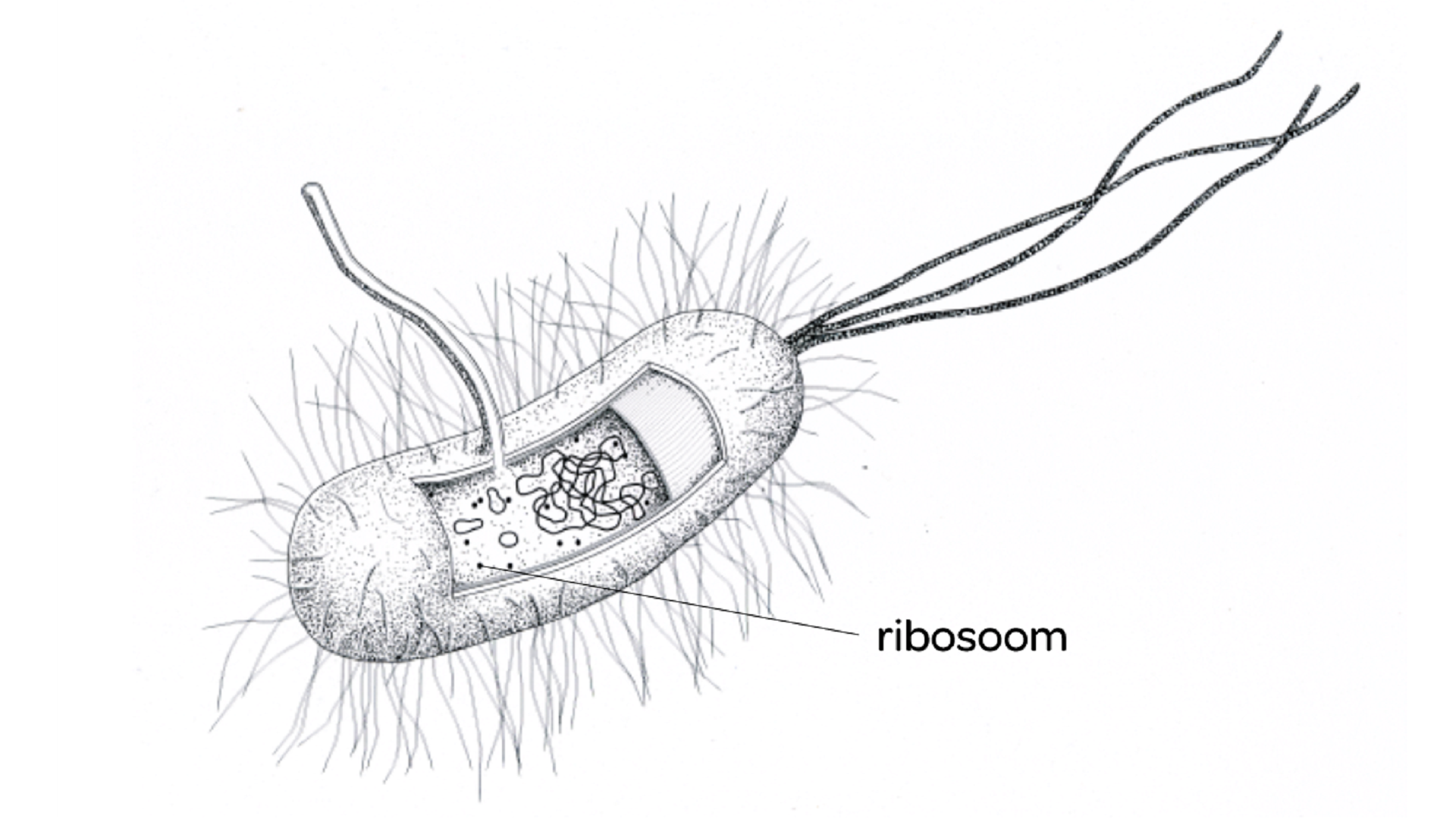Life would not exist without proteins. And without ribosomes, there would be no proteins. These tiny cell parts are therefore found in all living cells on earth. From large to small.
Life would not exist without proteins. And without ribosomes, there would be no proteins. These tiny cell parts are therefore found in all living cells on earth. From large to small.
In all living cells
A ribosome is a cell organelle made up of proteins and ribosomal RNA (rRNA). They can lie freely in the cytoplasm of the cell, or be attached to the nuclear membrane or endoplasmic reticulum. Ribosomes are indispensable in the formation of proteins. They therefore occur in large numbers in all living cells on earth. For example, an E. coli bacterium contains about 15,000 ribosomes, making up a quarter of its total weight.
Building proteins
Ribosomes assemble proteins. Super important, because without proteins a cell, and therefore an organism, would not function. Proteins are made up of a chain of amino acids. The order of these amino acids is determined by the DNA in the cell. This information is transferred from the DNA to an mRNA molecule (messenger RNA) during transcription. Translation takes place in the ribosome, translating the information from the mRNA into an amino acid sequence. This ultimately results in the protein.

Reading
Ribosomes generally consist of two parts. A small part that reads the mRNA, and a large part that brings the amino acids together into a larger chain. The small part recognizes and binds to the mRNA chain and reads it off. Once it recognizes a start codon, the first amino acid (a methionine complex) attaches. The large ribosome part then attaches to the small part and the mRNA chain, and the translation starts. So-called transfer RNA (tRNA) collects amino acids that float through the cell and transfers them to the ribosome where they are linked together to form an amino acid chain. The chain then folds itself into a three-dimensional protein.

